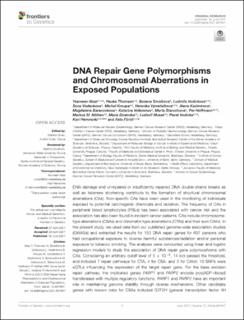| dc.contributor.author | Niazi, Yasmeen | |
| dc.contributor.author | Thomsen, Hauke | |
| dc.contributor.author | Smolkova, Bozena | |
| dc.contributor.author | Vodickova, Ludmila | |
| dc.contributor.author | Vodenkova, Sona | |
| dc.contributor.author | Kroupa, Michal | |
| dc.contributor.author | Vymetalkova, Veronika | |
| dc.contributor.author | Kazimirova, Alena | |
| dc.contributor.author | Barancokova, Magdalena | |
| dc.contributor.author | Volkovova, Katarina | |
| dc.contributor.author | Staruchova, Marta | |
| dc.contributor.author | Hoffmann, Per | |
| dc.contributor.author | Nöthen, Markus | |
| dc.contributor.author | Dusinska, Maria | |
| dc.contributor.author | Musak, Ludovit | |
| dc.contributor.author | Vodicka, Pavel | |
| dc.contributor.author | Hemminki, Kari | |
| dc.contributor.author | Försti, Asta | |
| dc.date.accessioned | 2021-08-10T09:02:27Z | |
| dc.date.available | 2021-08-10T09:02:27Z | |
| dc.date.created | 2021-07-13T09:25:48Z | |
| dc.date.issued | 2021 | |
| dc.identifier.citation | Frontiers in Genetics. 2021, 12, 691947. | en_US |
| dc.identifier.issn | 1664-8021 | |
| dc.identifier.uri | https://hdl.handle.net/11250/2767136 | |
| dc.description.abstract | DNA damage and unrepaired or insufficiently repaired DNA double-strand breaks as well as telomere shortening contribute to the formation of structural chromosomal aberrations (CAs). Non-specific CAs have been used in the monitoring of individuals exposed to potential carcinogenic chemicals and radiation. The frequency of CAs in peripheral blood lymphocytes (PBLs) has been associated with cancer risk and the association has also been found in incident cancer patients. CAs include chromosome-type aberrations (CSAs) and chromatid-type aberrations (CTAs) and their sum CAtot. In the present study, we used data from our published genome-wide association studies (GWASs) and extracted the results for 153 DNA repair genes for 607 persons who had occupational exposure to diverse harmful substances/radiation and/or personal exposure to tobacco smoking. The analyses were conducted using linear and logistic regression models to study the association of DNA repair gene polymorphisms with CAs. Considering an arbitrary cutoff level of 5 × 10–3, 14 loci passed the threshold, and included 7 repair pathways for CTA, 4 for CSA, and 3 for CAtot; 10 SNPs were eQTLs influencing the expression of the target repair gene. For the base excision repair pathway, the implicated genes PARP1 and PARP2 encode poly(ADP-ribosyl) transferases with multiple regulatory functions. PARP1 and PARP2 have an important role in maintaining genome stability through diverse mechanisms. Other candidate genes with known roles for CSAs included GTF2H (general transcription factor IIH subunits 4 and 5), Fanconi anemia pathway genes, and PMS2, a mismatch repair gene. The present results suggest pathways with mechanistic rationale for the formation of CAs and emphasize the need to further develop techniques for measuring individual sensitivity to genotoxic exposure. | en_US |
| dc.language.iso | eng | en_US |
| dc.rights | Navngivelse 4.0 Internasjonal | * |
| dc.rights.uri | http://creativecommons.org/licenses/by/4.0/deed.no | * |
| dc.title | DNA Repair Gene Polymorphisms and Chromosomal Aberrations in Exposed Populations | en_US |
| dc.type | Peer reviewed | en_US |
| dc.type | Journal article | en_US |
| dc.description.version | publishedVersion | en_US |
| dc.rights.holder | © 2021 Niazi, Thomsen, Smolkova, Vodickova, Vodenkova, Kroupa, Vymetalkova, Kazimirova, Barancokova, Volkovova, Staruchova, Hoffmann, Nöthen, Dusinska, Musak, Vodicka, Hemminki and Försti. | en_US |
| dc.source.volume | 12 | en_US |
| dc.source.journal | Frontiers in Genetics | en_US |
| dc.identifier.doi | 10.3389/fgene.2021.691947 | |
| dc.identifier.cristin | 1921554 | |
| dc.relation.project | EC/H2020/856620 | en_US |
| dc.source.articlenumber | 691947 | en_US |
| cristin.ispublished | true | |
| cristin.fulltext | original | |
| cristin.qualitycode | 1 | |

